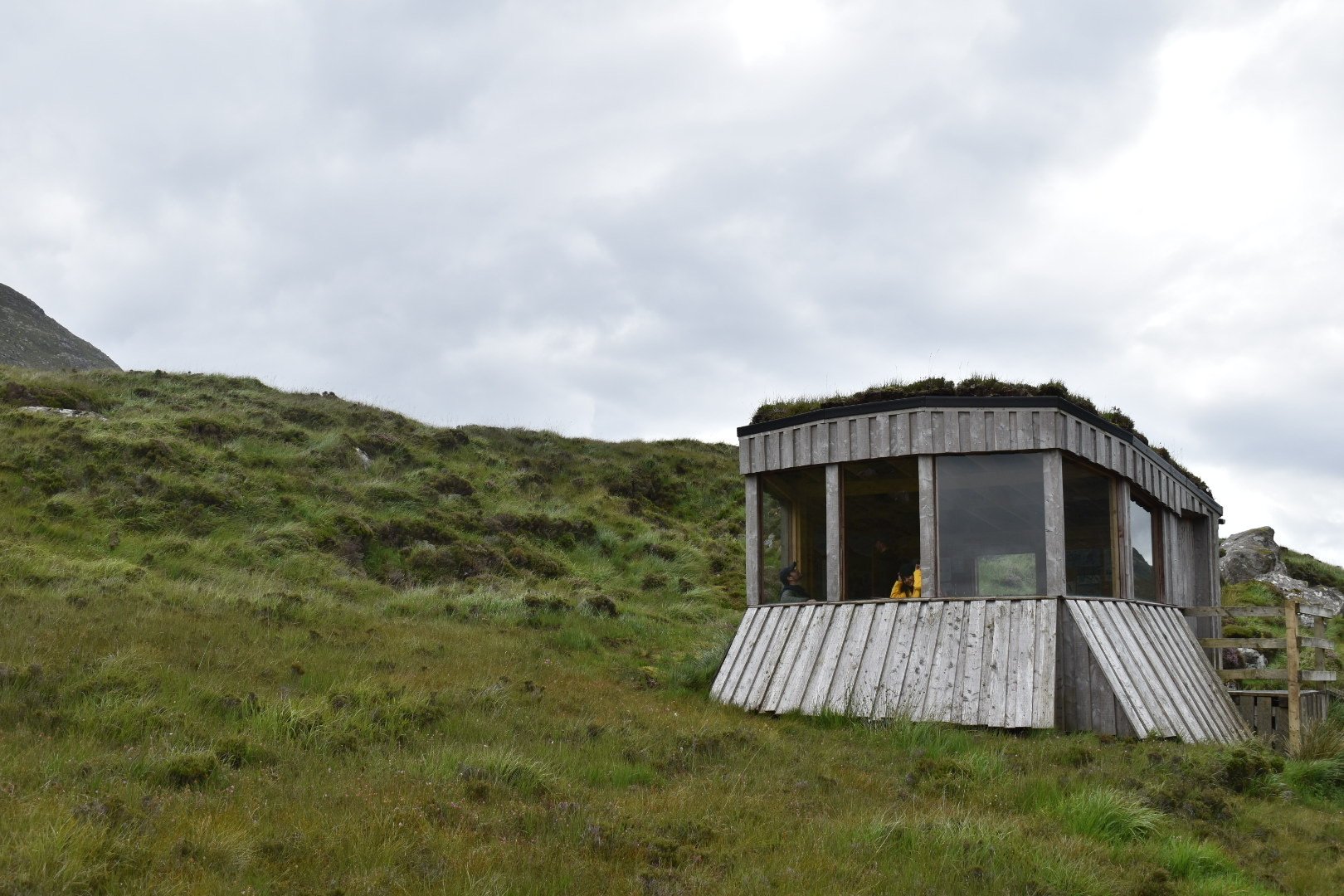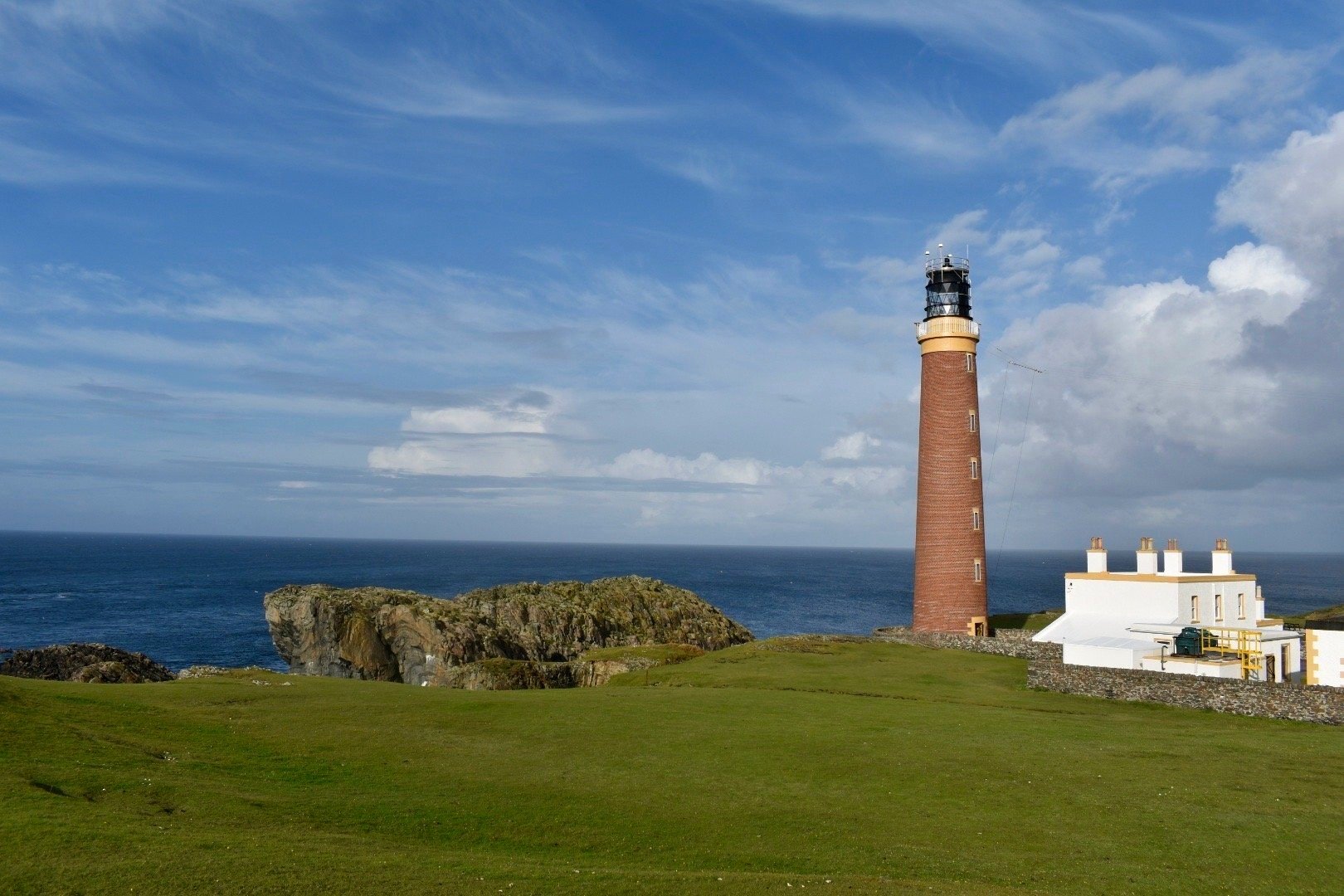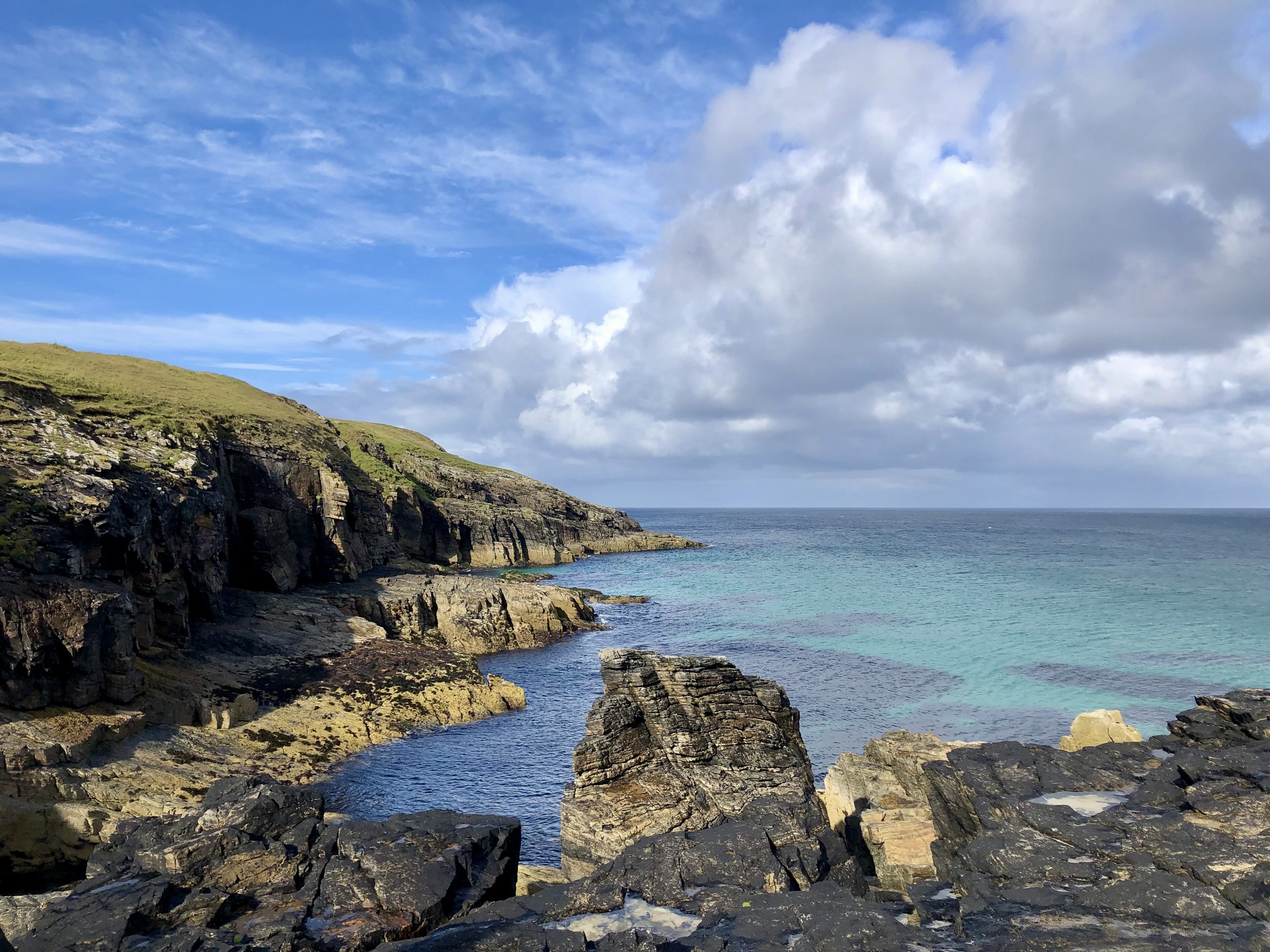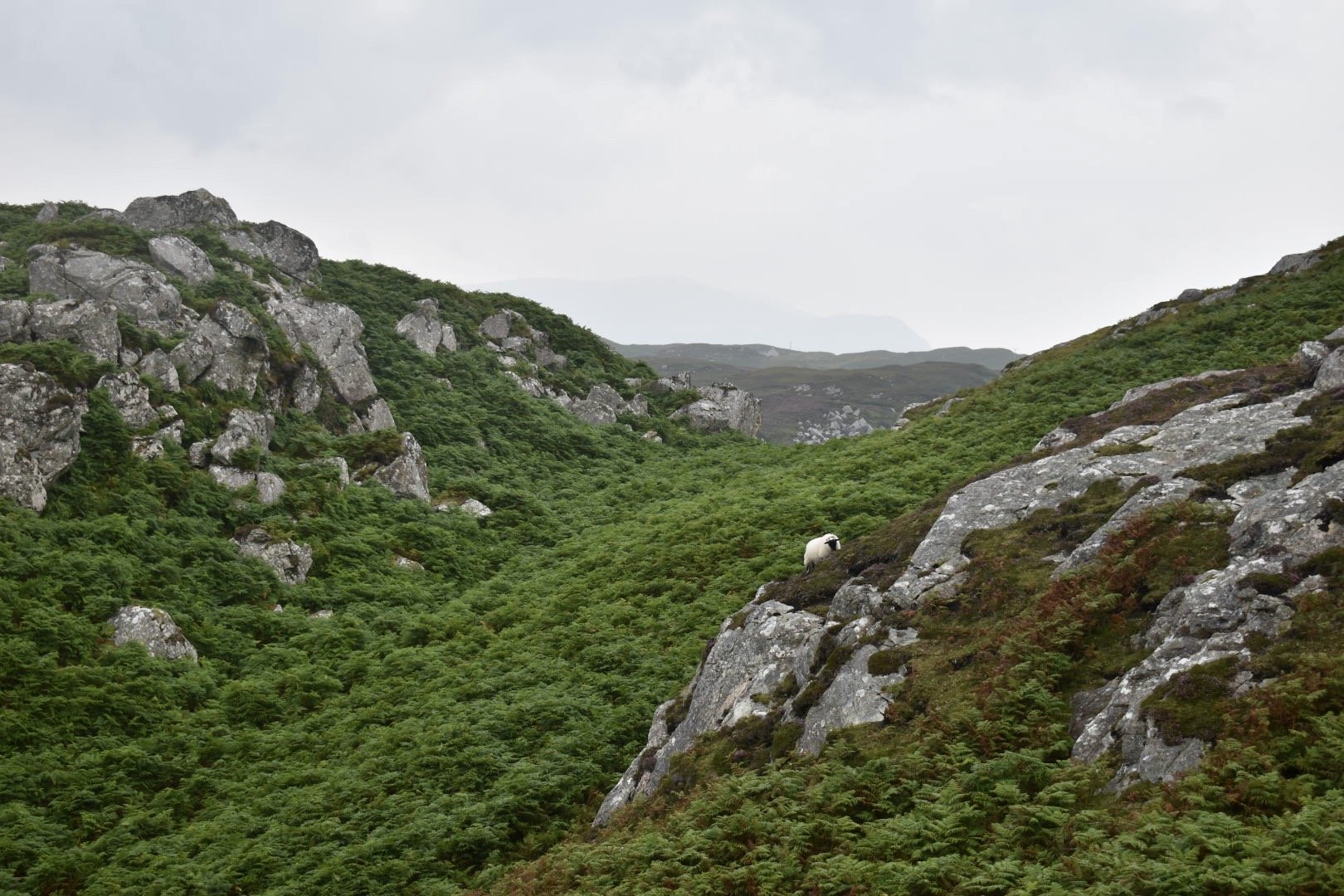Exploring the Isles of Harris and Lewis by Campervan | Scotland's Outer Hebrides
Lying 45 miles off of Scotland’s rugged northwestern coast, the Outer Hebrides comprise five islands within the country’s greater archipelago on the North Atlantic. The Outer Hebrides are celebrated for their remote and wild landscapes and for continuing to honour their traditional cultural ties. One of the main strongholds of the Gaelic language, the Hebrides are widely considered one of the only regions left in Scotland where the majority of residents speak Scots Gaelic as their first language.
This post highlights the isles of Lewis and Harris, the northernmost of the Outer Hebrides. Although two isles in name, Lewis and Harris actually share the same landmass, with Lewis comprising the north half of the island and Harris comprising the southern half.
Although self-driving is the best way to get around the isles, you’ll find many shared single track roads after you come off the main roadway, which will require a confident driver able to safely navigate the passing places.
Our Experience
Last summer, we took five days to do the Isles of Lewis and Harris with friends in a self-contained camper van. Recommending itineraries is not normally something we do, but we found that forward planning is a must if you’re coming to the Hebrides as it’s definitely not the type of place where you can wing it. With ferry availability from the mainland and accommodation booking up months in advance in anticipation for the summer season and many businesses choosing to close over the winter months, pre-booking is essential.
Although we wanted the experience and flexibility of camping, we were glad we opted for a camper over a tent (heeding the warnings of others who had mentioned the Hebrides’ notorious unpredictability in weather). Encountering rain sporadically throughout our trip, as well as fluctuating temperatures, it was a good call to make with most accomodation options booked or closed.
Many wildlife lovers flock to the Hebrides, which has some of “the highest densities of breeding golden eagles in Europe”. The quaint North Harris Eagle Observatory promises the best spot to see golden eagles.
Day 1: Taking the Ferry from Ullapool to Stornoway
Predating Stonehenge, the Calanais Standing Stones draw many visitors to Lewis, from history buffs wanting to be taken back 5,000 years ago to lovers of pop culture who want to recreate iconic Outlander scenes.
Although some travel itineraries can count a travel day as Day 0, we always like to consider how you get to and from a place as part of the experience, and headed up to this part of the Highlands, you feel like you’re disconnecting from the world with every mile north (in a great way).
As our friends were based in Edinburgh and we were based in the Cairngorms, we decided to catch the afternoon ferry out of Ullapool. Ullapool itself is quaint and charming, with a high street of pubs, coffee shops and independents and an adjacent coastal road that has enviable views over the sea.
After we picked up our pre-booked tickets from the ferry terminal, for the four of us and our 4-berth self contained camper van, we grabbed a bite before heading to the Hebrides, the crossing due to take just under 3 hours (more on Cal Mac ferries below). Stopping briefly in Stornoway’s centre, the largest town on Lewis/Harris and home to the famous black pudding, we went to check into our first overnight spot at Laxdale Caravan Park.
Planning Your Trip:
Ullapool is very remote, and although self-driving is the easiest choice as there are no rail lines, those looking to get to the isles can also access them via Uig on the Isle of Skye (which because of it’s popularity, has a few more connections than the Hebrides do). Head to Caledonian MacBray’s journey planner, and if you’re wanting to go in the summer months, make sure to plan in advance.
Keep in mind that many businesses choose to close in the winter time, so late Spring/ summer/ early Autumn is definitely the best time to come for a visit.
Day 2: Stornoway to Butt of Lewis (Rubha Robhanais)
Highlights: Calanais Standing Stones, Gearrannan Blackhouse Village, Port of Ness, Butt of Lewis Lighthouse
The Gearrannan Blackhouse Village, a site that shows the best of the Western Isles history and culture with their blackhouses made of thatch and double drystone walls.
Starting from our campsite in Stornoway, we started day 2 taking the A859 south and turning west at the junction near Leurbost with the Calanais Standing Stones in mind. Still shrouded in mystery, the site is dated from the Stone Age and attracts visitors of all kinds, from history buffs to Outlander fans. The stones are incredibly impressive up close, and enjoy great views around the surrounding area from where they stand on the hill.
Known for it’s living ties to traditional Gaelic and Scottish culture, Lewis has quite a few active sites that showcase the area’s history, including traditional housing and livelihoods such as tweed-weaving. Stopping at Dun Carloway and than the Gearrannan Blackhouse Village, we made our way up to the Butt of Lewis, stopping in at the Port of Ness for lunch at the Breakwater. Finishing our drive at the Butt of Lewis/ Rubha Robhanais, we were rewarded with incredible views of the North Sea from the clifftop lighthouse. Making our way back down where we came, we only made one stop to watch a locals game of footy, being played in the pouring rain (in true Scottish fashion), before heading back to Laxdale for dinner and drinks in the camper.
Day 3: north Harris and scalpay
Highlights: North Harris Eagle Observatory, Huisinis Beach, Scalpay, Eilean Glas Lighthouse
The start of day three had us heading south with our sights on North Harris. Although two separate islands, driving from the top of Lewis to the bottom of Harris takes only a modest two hours and as we drove south on the main A859 roadway, we noticed the landscape changing to more mountainous and rugged terrain.
Our first intended stop in North Harris was Huisinis’ white sand beach, which was recommended to us by the parents when they took a tour of the island the year before. It was our first single track road out off the main roadway (the B887), and admittedly nervewracking at times in the camper. However, our time living in Highlands had us used to these kinds of roads and how to safely navigate passing places (stay tuned for a blog post about our tips on driving in the Highlands).
On our way to Huisinis, we stopped at the Eagle Observatory (pictured above). Although we didn’t spot any Eagles ourselves, the walk to the hut and the hut itself is quite spectacular and really highlights the wild and remote landscape of North Harris.
Eilean Glas Lighthouse
After coming back out from Huisinis, we made our way over to Scalpay, a small island connected by bridge south of Tarbert. Tarbert itself, the main community on Harris, is sleepy and quiet when we pass through it. We didn’t realise at the time it was a Sunday and most residents and businesses choose to close, so we were lucky to find a restaurant open (the Pierhouse Cafe and Restaurant, which was lovely), and ducked into the local grocer just in time to pick up food for the evening before it’s afternoon closure.
Heading out to Scalpay, the drive to the Eilean Glas lighthouse track is spectacular, with the roads weaving in and out of clusters of small coastal residences and sea lochs. We find parking in a limited spot, and start the walk out to the lighthouse, whose circular path is rich in greenery and undulating terrain, something completely different than what we’ve seen on the isles yet. For a detailed description of the Scalpay and lighthouse walk from our favourite walking site, Walkhighlands, go here.
Going back via Tarbert, we pulled into our pre-booked campsite at the Traigh Horgabost campsite, which is basic but ideally situated on the beach, and relax after a long day.
Day 4: South Harris
Highlights: Traigh Iar Beach, Luskentyre, St. Clement’s Church, The Golden Road
The landscape on South Harris’ Golden Road is something off of another planet. Taking a drive down this winding coastal road is a must if you’re visiting the island.
Waking up at Traigh, we had our sights set for exploring all of South Harris, starting at Luskentyre, whose famed white sand beaches rival those in Pacific Islands. However, their looks are about all they have in common with their southern counterparts. Even in the height of summer, the changeable weather and water temperatures mean you’re unlikely to see anyone sunbathing, although we did spot a few brave surfers in wetsuits braving the cold.
We continued beach-hopping down the main road south and had a late lunch at iconic Anchorage restaurant (which has now sadly closed in the last year), looking out onto the CalMac ferry that connects Leverburgh on Harris with Berneray on North Uist (another of the Outer Hebridean isles). If you were planning one extending your trip to the Uist isles, this is where we’d recommend connecting from.
Stopping further south at St. Clements Church, built for the chiefs of the Harris Macloed clan in/around the late 15th century, we then took advantage of the sparsely populated roads and followed The Golden Road back north. This stretch of road is otherworldly, with rugged and rocky terrain, small charming villages, and picturesque lochs, all able to be viewed from the undulating single track road. We stopped in at the Harris Tweed Isle of Harris shop, whose namesake tweed is without a doubt the highest quality in Scotland.
We made it back to Traigh to watch the sunset (quite late due to the time of year) and enjoy our last night in the Hebrides.
Day 5: Back to the Mainland
One of the UK’s most famous beaches, Luskentyre’s white-sands and crystal clear blue waters look like they should be somewhere in the Pacific than the Atlantic.
Taking the mid-morning ferry, we woke up early in Traigh Horgabost in South Harris. After a breakfast in the camper and one last peek at the view off Traigh Iar beach to the Sound of Taransay, we drove the hour distance up to the ferry terminal in Stornoway, where we had pre-booked our trip back to Ullapool on CalMac.
After parking our camper in the CalMac queue, we took advantage of having a bit of extra time to wander around Stornoway’s centre, a quaint but relatively busy port town that is looked over by Lews Castle. After our friends picked up some of the area’s famous black pudding to takeaway, we made the journey back to the mainland.
Heading out to Lewis and Harris is such a unique adventure firmly off the tourist trail. Whether you’re coming in from abroad or enjoying a staycation, a trip to the Outer Hebrides is definitely worth it for travellers who enjoy remote and wild landscapes, locations with many cultural and historical ties, and interacting with communities who still are very much rooted in more traditional customs and a relaxed way of living.
Happy Travels,
Sam
More on Scotland….
Pin this post to revisit later…
















If you’ve ever visited, lived or travelled extensively within the Scottish Highlands, you’ll know it’s like no other place in the world. With stunning scenery and a rich history, the area truly has something for everyone. From calling the Highlands home, here are our recommendations, including our personal favourites and suggestions on ‘off-the-beaten-track’ experiences.